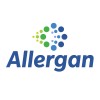
A Study Evaluating the Efficacy and Safety on Moderate to Severe Dry Eye
Dry EyeThe purpose of this study is to compare the efficacy and safety of HBM9036 Ophthalmic Solution versus placebo in the treatment of dry eye

Efficacy of an Ocular Bandage Contact Lens for the Treatment of Dry Eye After Cataract Surgery
CataractDry EyeTo study the efficacy of an ocular bandage contact lens for the treatment of dry eye after cataract surgery

Efficacy and Safety of a New Artificial Tear Formulation Compared With Systane Ultra Multidose in...
Dry Eye Disease (DED)The purpose of this study is to compare the efficacy and safety of a new artificial tear formulation (011516X) with Systane® Ultra Multidose for 90 days in participants with Dry Eye Disease (DED).

Clinical Study to Evaluate the Efficacy of Ectoin® Containing Eye Spray for Treatment of Dry Eye...
Dry EyeSubjective and objective evaluation of the efficacy and tolerability of preservative-free "Ectoin® Eye Spray - Colloidal" and comparison of the efficacy and tolerability between "Ectoin® Eye Spray - Colloidal" and Tears Again® in patients with mild-moderate dry eye disease

Study to Assess Safety, Tolerability, and Pharmacokinetics of Single and Multiple Ascending Doses...
Dry Eye DiseaseDry eye disease (DED) is a keratoconjunctive disorder that "is a multifactorial disease of the tears and ocular surface that results in symptoms of discomfort, visual disturbance, and tear film instability with potential damage to the ocular surface. The goal of this study is to assess the safety, tolerability, and pharmacokinetics (PK) of multiple ascending doses of palovarotene ophthalmic solution in healthy adult subjects.

Pilot Study to Investigate the Feasibility, Reliability and Efficacy of Utilizing OCT to Automate...
KeratoconusOcular Surface Disease7 moreEYEdeal Scanning Technology enables rapid measurement of corneal and scleral topography. By accurately measuring the ocular surface with this imaging technology, the current iterative fitting method required to fit PROSE (prosthetic replacement of the ocular surface ecosystem) devices could be replaced and/or strengthened with a more rapid, automated fitting sequence. This could considerably reduce the time needed per visit, the number of visits, and the number of devices needed to be manufactured to reach the endpoint. Additionally, the scanning technology may afford the opportunity to successfully fit some pathology that were previously treatment failures. The automated technology may as well reduce the intensive clinician training time needed to fit PROSE devices, therefore increasing the availability and access to patients. The goal of this research is to evaluate the reliability and efficacy of this automated technology for fitting PROSE devices. Data from real-time measurement of the human eye ocular surface topography will be used to fabricate a prosthetic lens. The fit of the PROSE device will be evaluated, as well as the subjective comfort of the fit.

A Clinical Trial to Assess Subjects With Dry Eye Disease.
Dry EyeA Multi-Center Randomized, Double-Masked, Parallel Design, Vehicle-Controlled Phase 2 Clinical Trial to Assess the Efficacy and Safety of 0.25% Reproxalap Ophthalmic Solution Compared to Vehicle in Subjects with Dry Eye Disease

[KSR-001-P02] Phase 2b/3 Study, Evaluate the Efficacy and Safety of KSR-001 in Patients With Dry...
Dry Eye SyndromesThe purpose of this study is to evaluate the efficacy and safety of KSR-001 in patients with Dry Eye Syndrome

The TRANQUILITY 2 Trial: A Phase 3 Clinical Trial to Assess the Efficacy and Safety in Subjects...
Dry EyeThe TRANQUILITY 2 Trial: Multi-Center Randomized, Double-Masked, Parallel Design, Vehicle-Controlled Phase 3 Clinical Trial to Assess the Efficacy and Safety of 0.25% Reproxalap Ophthalmic Solution Compared to Vehicle in Subjects with Dry Eye Disease

Investigator Initiated Study to Assess the Efficacy of OC-01 (Varenicline) Nasal Spray on Signs...
Dry Eye DiseaseEvaluate the safety and effectiveness of OC-01 (varenicline) nasal spray for amelioration of signs and symptoms of dry eye disease in subjects following laser-assisted in situ keratomileusis (LASIK).
